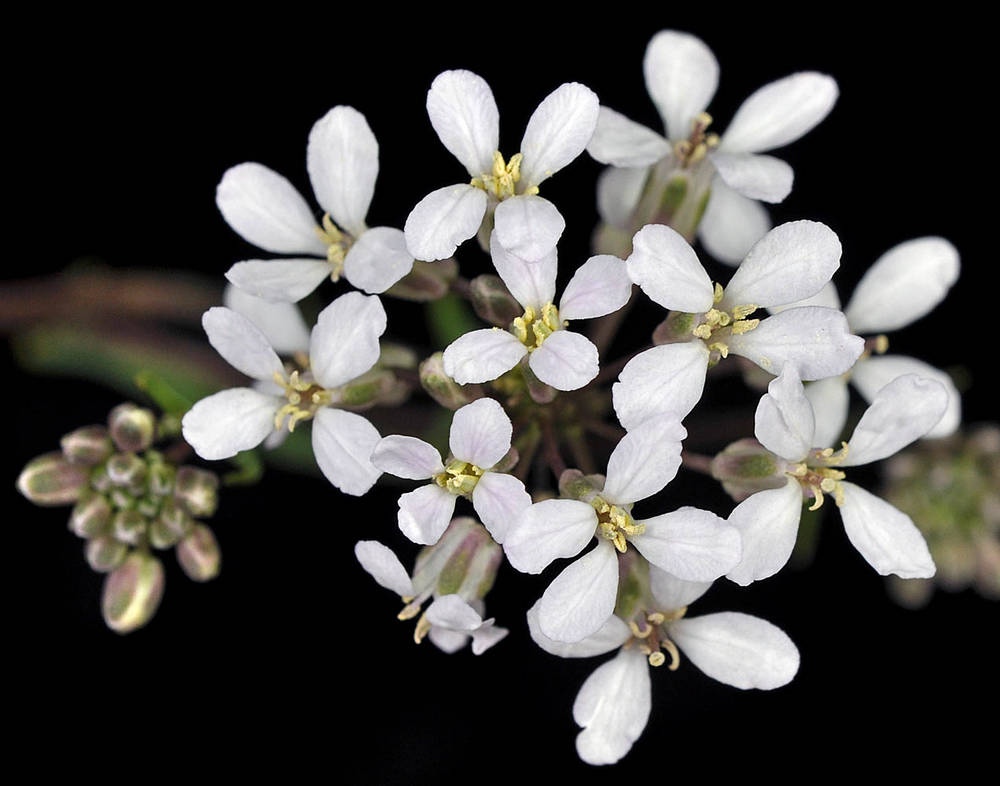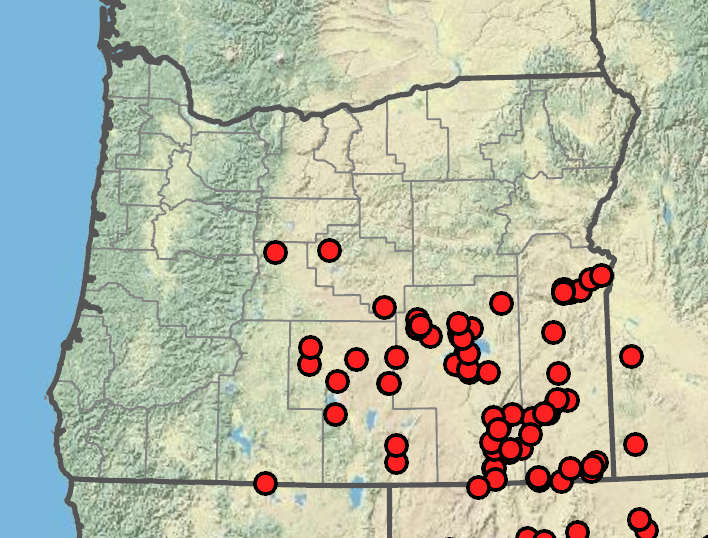Thelypodium crispum
Thelypodium flexuosum
nodding thelypody, spreading thelypodium, zigzag thelypody
often subdecumbent, flexuous, 1.5–5.6(8.5) dm.
lanceolate to oblanceolate; (2)3.5–16.5(20.5) × (0.5)1–2.5(4.5) cm;
margins entire;
petioles 1–6.5(13) cm, not ciliate.
lanceolate to linear, 1–7(11) × 0.2–0.7(1.4) cm, bases sagittate to somewhat amplexicaul, sessile.
few-flowered, fruiting pedicels horizontal to divaricate-ascending; (2.5)4–9(16) mm.
sepals oblong; erect, 3–4(4.5) mm;
petals spatulate, oblanceolate, or obovate, 6–9(10) × (1.5)2–3(3.5) mm, lavender or white;
claws 2–3.5(4) mm; narrowest at base;
petal margins not crisped;
anthers oblong, not circinately coiled, nectar glands lateral;
ovules 12–30 per ovary;
styles cylindrical; (0.3)1–2(3) mm;
stigmas entire;
gynophore 0.5(1) mm.
erect to ascending; terete, torulose, 1–2.5(4.2) cm × 0.8–1(1.5) mm.
(1)1.3–1.5 × 0.5–8(1) mm.
=26.
Thelypodium crispum
Thelypodium flexuosum
Alkaline sandy loam or clay soils, open deserts. Flowering Apr–Jun. 700–1900 m. BR, ECas, Owy. CA, ID, NV; southeast to UT. Native.
Ihsan Al-Shehbaz



